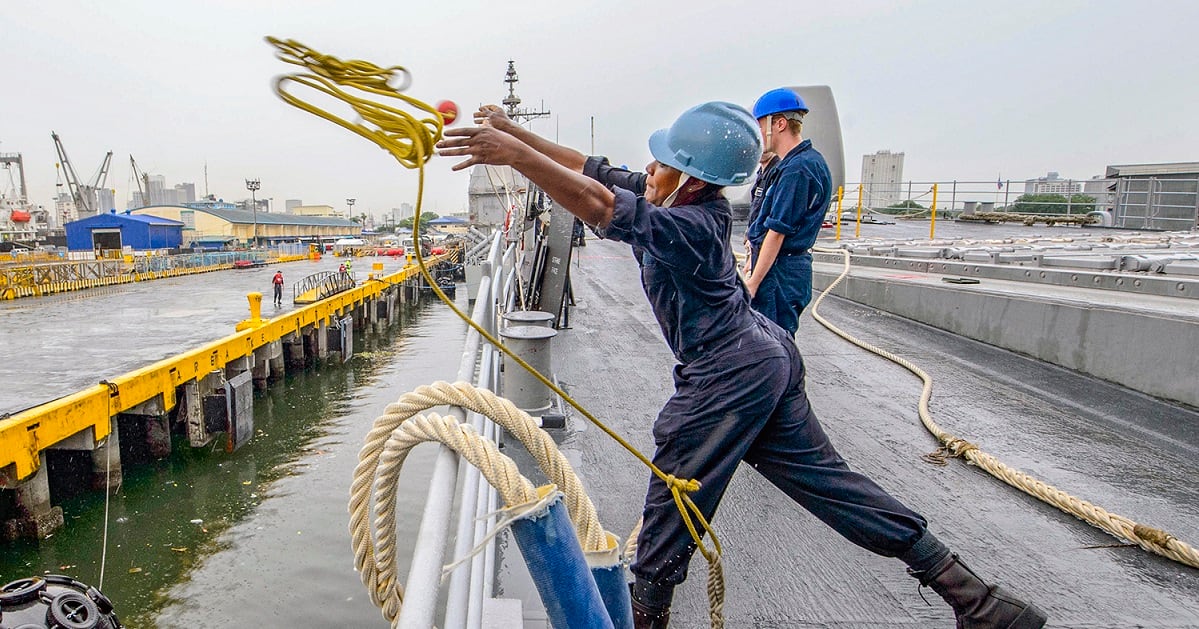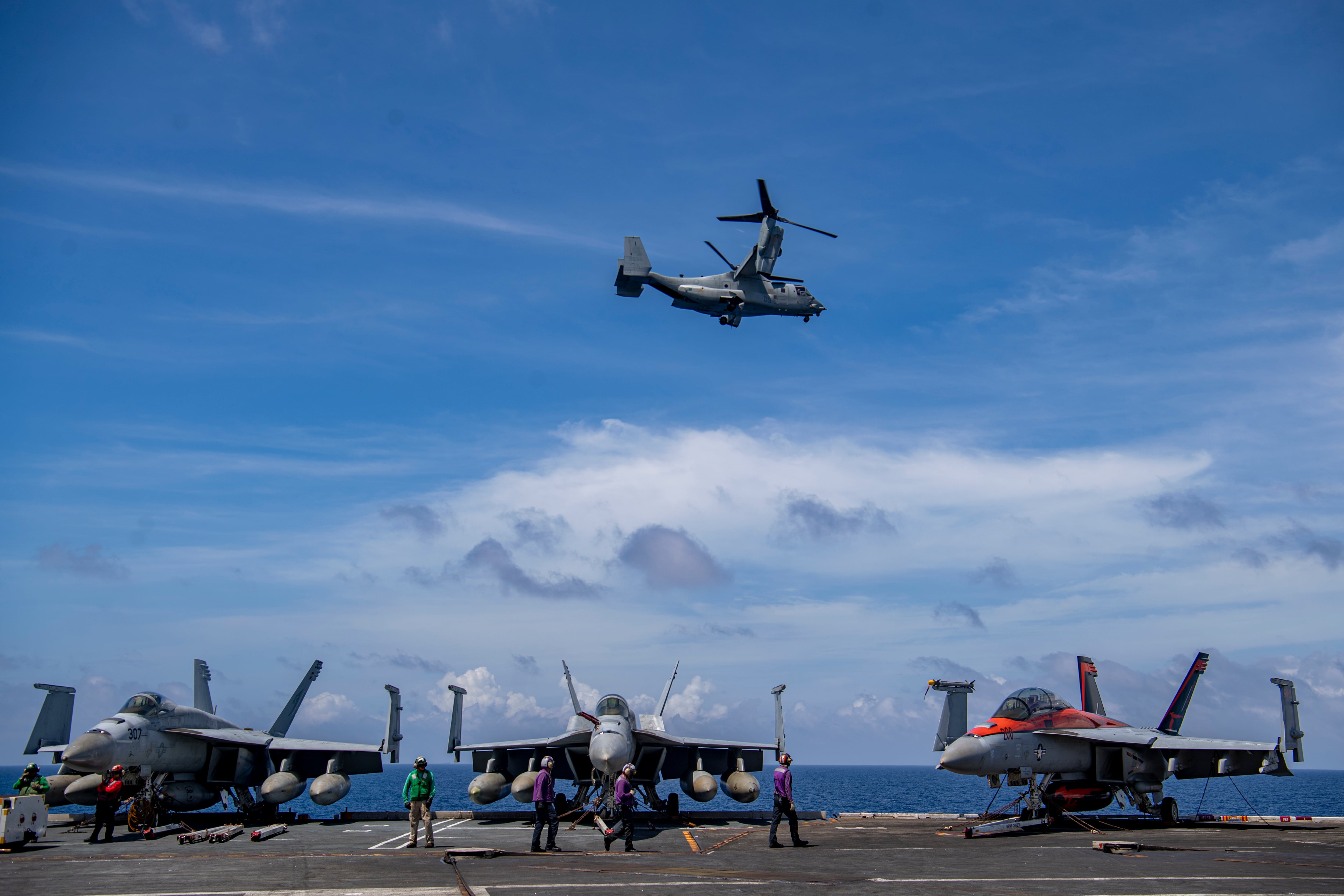The Biden administration promised 2023 would be “the most transformative year” for U.S. force posture in the Indo-Pacific region in a generation. With a trio of major political announcements and a proposed budget boost, 2023 is off to a strong start. But there is no time for a scenic overlook of recent accomplishments. To achieve the transformative effect needed to bolster deterrence against China, the Biden administration needs to keep its foot on the gas.
In January, the United States and Japan agreed to keep the U.S. 3rd Marine Division in Okinawa (instead of Guam) and to replace it with the new 12th Marine Littoral Regiment in 2025. The two countries also agreed to share ammunition storage at Kadena Air Base.
In February, the United States and the Philippines agreed to designate four new sites as part of the Enhanced Defense Cooperation Agreement, or EDCA, which provides access for U.S. forces.
In March, the United States agreed as part of the AUKUS security partnership to increased U.S. submarine port visits to Australia and to rotate up to four Virginia-class submarines by as early as 2027.
Also in March, the Pentagon’s budget request included $2.3 billion for military construction west of the international date line — a $400 million increase from the prior year.
So far so good. But overcoming a decade-long “say-do” gap on Indo-Pacific posture and keeping pace with a rapidly evolving Chinese military threat will require sustained urgency matched by robust investment.
Building on recent political momentum is critical. With Japan, we need ambitious defense diplomacy to secure new access for U.S. forces and to make shared use of bases, ports, airfields and other facilities the rule, not the exception. And after years of legal and political challenges, the U.S. and the Philippines need to make up for lost time and maximize the potential of EDCA sites through accelerated investment and expanded combined training and operations.

More posture dollars should be focused directly on achieving a more distributed and resilient posture. Most investment in the Indo-Pacific is dedicated to maintaining existing facilities or executing legacy posture initiatives, some of questionable relevance to the current or future threat. That investment is also geographically concentrated. West of the international date line, the Pentagon plans to spend 75% of fiscal 2024 military construction funds in Japan and Guam — up from 66% the previous year. Going forward, more investment is needed in the second island chain, Oceania and Southeast Asia.
Beyond politics and budgets, achieving a “transformative” effect on Indo-Pacific posture requires actually moving forces. The Obama administration’s “pivot to Asia” was matched with two additional destroyers and fifth-generation fighters in Japan; an additional submarine and Terminal High Altitude Area Defense battery in Guam; and rotational littoral combat ships in Singapore, among other moves. The Biden administration needs to demonstrate similar follow-through, and there’s plenty of options to do so.
The Air Force has operated fifth-generation aircraft for nearly two decades, but it has no plan to permanently station its most advanced fighters in the Indo-Pacific. The Air Force has promised to maintain a continuous fighter presence at Kadena Air Base in Japan, including fifth-generation aircraft, as it withdraws and retires F-15C/D aircraft. Beyond that, it has offered no specifics. Basing F-35As at Misawa Air Base in Japan would be a strong next step.
The Multi-Domain Task Force is central to the Army’s contribution toward joint operations in the Indo-Pacific. But while it has based MDTFs in Washington state and Hawaii, the Army does not yet plan to station an MDTF west of the international date line. The Army chief of staff recently hinted this may change. The Biden administration should ensure it does, including by prioritizing access for an MDTF in defense diplomacy with Japan.
The Navy has long pledged to send its most advanced ships and aircraft to the Indo-Pacific. However, of the Navy’s 20 commissioned Virginia-class submarines — critical to the U.S. military’s advantage over China — the Navy has sent 14 to Atlantic ports and just six to Pacific ports. And none of the Navy’s most advanced attack boats are homeported west of the international date line. While keeping pace with Russia’s submarine threat is critical, the Biden administration should rebalance that laydown by stationing Virginia-class submarines in Guam and San Diego, California.
The Biden administration should also accelerate investment in the logistics network that is essential for credible deterrence and effective warfighting. Fuel storage and distribution is critical, especially with the planned closure of Red Hill Bulk Fuel Storage Facility. But the Pentagon is kicking the fuel can down the road. The Defense Logistics Agency plans to spend at least $360 million over the five-year Future Years Defense Program in projects for fuel facilities and storage west of the international date line. But it has requested no funding for those projects in next two fiscal years, and punted most projects to FY27 and FY28. Working with Congress, the Biden administration should accelerate these projects as able.
The weaknesses of U.S. force posture in the Indo-Pacific have contributed to the erosion of credible deterrence. But with sustained diplomatic urgency, robust investment and more advanced capabilities, a transformation of U.S. force posture can help restore and preserve credible deterrence in the Indo-Pacific.
Dustin Walker is a nonresident fellow at the American Enterprise Institute think tank. He was previously a professional staff member on the Senate Armed Services Committee and an adviser to Sen. John McCain, R-Ariz.





